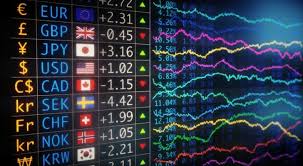In the world of Forex trading, understanding the concept of a pip is essential for any trader looking to navigate the complexities of the market successfully. A pip, which stands for „percentage in point,” is the smallest price move that a given exchange rate can make based on market convention. For most currency pairs, a pip is typically the fourth decimal place, while for some pairs, such as those involving the Japanese Yen, a pip is the second decimal place. In this article, we will delve deeper into what a pip is, its significance in trading, and how to effectively manage your trades with the concept of pips in mind. For more insights on Forex trading, check out what is a pip in forex trading Trading Connexion.
What Exactly Is a Pip?
In Forex trading, a pip refers to the smallest price fluctuation that can occur in the exchange rate of a currency pair. In practical terms, this means that if the EUR/USD currency pair moves from 1.1050 to 1.1051, it has moved one pip. Understanding this fundamental concept is crucial because it allows traders to gauge the potential profit or loss in their trades. The pip is particularly important when assessing risk and calculating position sizes.
The Importance of Pips in Forex Trading
Pips play a significant role in trading as they represent the basic units of measurement for price movements in the Forex market. Here are a few key reasons why understanding pips is fundamental for traders:
- Measuring Profit and Loss: Knowing how many pips a trade has moved is essential for calculating the profitability of a trade. Traders often set take-profit and stop-loss orders based on pip values to manage their risk effectively.
- Position Sizing: The number of pips gained or lost can help determine the appropriate position size for a trade. This helps traders manage their capital efficiently and minimize the risk of significant losses.
- Brokers and Spreads: The difference between the bid (buy) and ask (sell) prices, known as the spread, is usually measured in pips. Understanding how spreads work can save traders money and help them make informed decisions.
Calculating the Value of a Pip
The value of a pip varies depending on the currency pair being traded and the size of the trade. The standard value of a pip is calculated based on a trade size of one standard lot, which is 100,000 units. For most currency pairs, a single pip movement has a value of $10 for a standard lot, $1 for a mini lot (10,000 units), and $0.10 for a micro lot (1,000 units). Here is a brief example of how to calculate the value of a pip:

Example: If you are trading the EUR/USD at a price of 1.1200 and you buy one standard lot (100,000 units), if the price moves to 1.1201, you’ve made a profit of one pip, equating to a profit of $10.
Pip Calculators
Many online tools can help traders calculate pip values across various currency pairs and lot sizes. These pip calculators make it easier for traders to work out the potential profit or loss on their trades before entering the market. They also help in determining the appropriate position size based on individual risk tolerance and trading strategy.
The Difference Between Pips and Points
While pips are commonly used in forex trading, the term „point” is often used in other financial markets, such as stocks or ETFs. A point typically represents a whole number change in the price of an asset. It’s important for traders to understand the distinction between these two measurements as they can impact trading strategies and risk management practices.
Using Pips for Strategy Development
Successful Forex trading often involves developing a trading strategy that incorporates pip measurements. Here are some tips on how to effectively use pips in your trading plan:
- Setting Stop-Loss and Take-Profit Orders: Utilize pip values to set realistic stop-loss and take-profit levels based on historical volatility and expected price movement.
- Risk Reward Ratio: Evaluate your risk-to-reward ratio for trades using pip calculations to ensure that potential profits exceed potential losses.
- Backtesting: Many traders backtest their strategies by analyzing how many pips they could have gained or lost in past market conditions, which allows for better-informed trading in the future.
Conclusion
In conclusion, understanding what a pip is and how it affects your trades is essential for anyone looking to succeed in the Forex market. Pips are the building blocks of price movement, providing traders with valuable information needed for efficient risk management and strategy development. By learning how to calculate pip values and incorporate them into your trading plan, you can make informed decisions that enhance your trading performance. As the Forex market continues to grow in complexity and opportunity, having a solid grasp of pips and their implications can significantly benefit traders at all levels.

